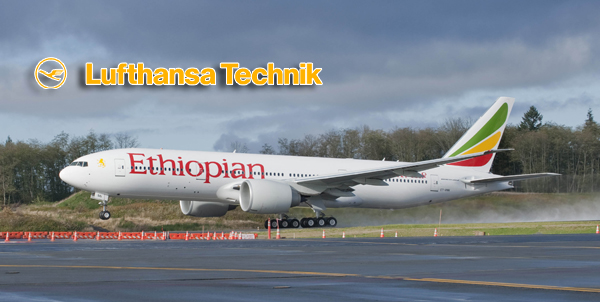Lufthansa Technik to Support Ethiopian Dreamliner Fleet
Lufthansa Technik is expanding its involvement in the provision of technical support for the Boeing 787 by signing a long term contract with Ethiopian Airlines. Ethiopian Airlines, the fastest growing airline in Africa, is the second 787 customer, next to Japan Airlines, to have appointed Lufthansa Technik to provide component support for its modern long-haul fleet.
The Boeing 787 Total Component Support (TCS) contract signed in Addis Ababa with Ethiopian will run for a term of ten years.
Following the delivery of Ethiopian first 787, named “Africa First”, in August, Lufhtansa Technik has taken on the role of providing material support using the existing material pool in Germany. Services include repair and logistics for three Dreamliners already in Ethiopian fleet and the remaining seven on order after they have been delivered.
Lufthansa Technik has already been assisting the Star Alliance member with support in optimization of the MRO organization with a team on site. The Hamburg based company, Lufthansa Technik, already provides component support for Ethiopian Q-400 and MD11 aircraft.
“Ethiopian new contract with Lufthansa Technik for the 787 is a continuation of existing relationship between the two and will greatly enhance Ethiopian MRO by improve its dispatch reliability, reduce maintenance cost and enhance its supply chain management effectiveness and efficiency of this ultra-modern aircraft,” said Tewolde Gebremariam, CEO of Ethiopian.
“We are delighted by the trust that has been placed in us with this second long-term contract for the extensive component support for the Boeing 787,” said Dr. Burkhard Andrich, Head of Aircraft Component Services at Lufthansa Technik AG. “And we are confident that, with our experience, we will also be able to make a substantial contribution towards the reliable and economic operation of this ultra-modern aircraft of Ethiopian Airlines, one of the most important long-haul aircraft for the years ahead.”

